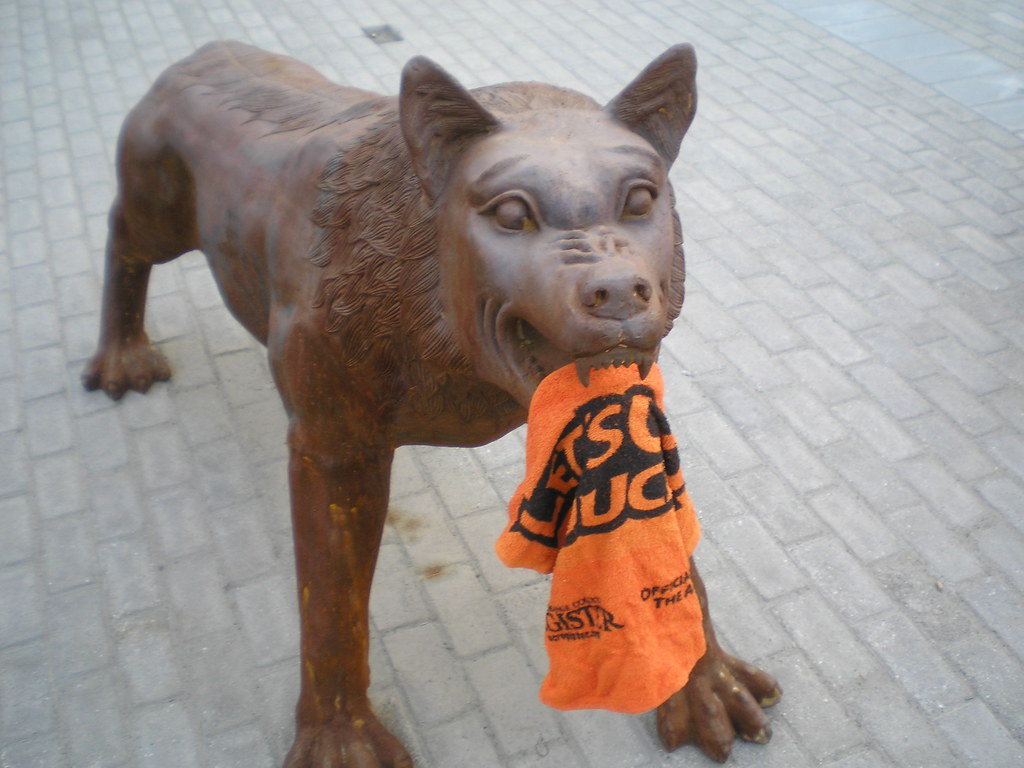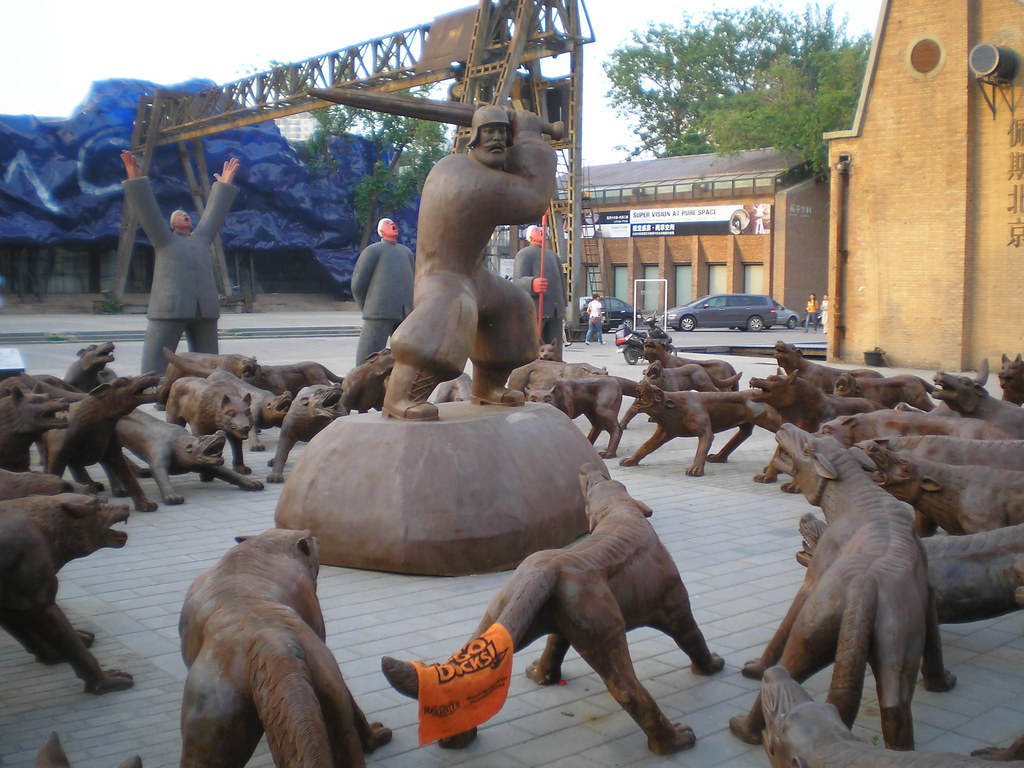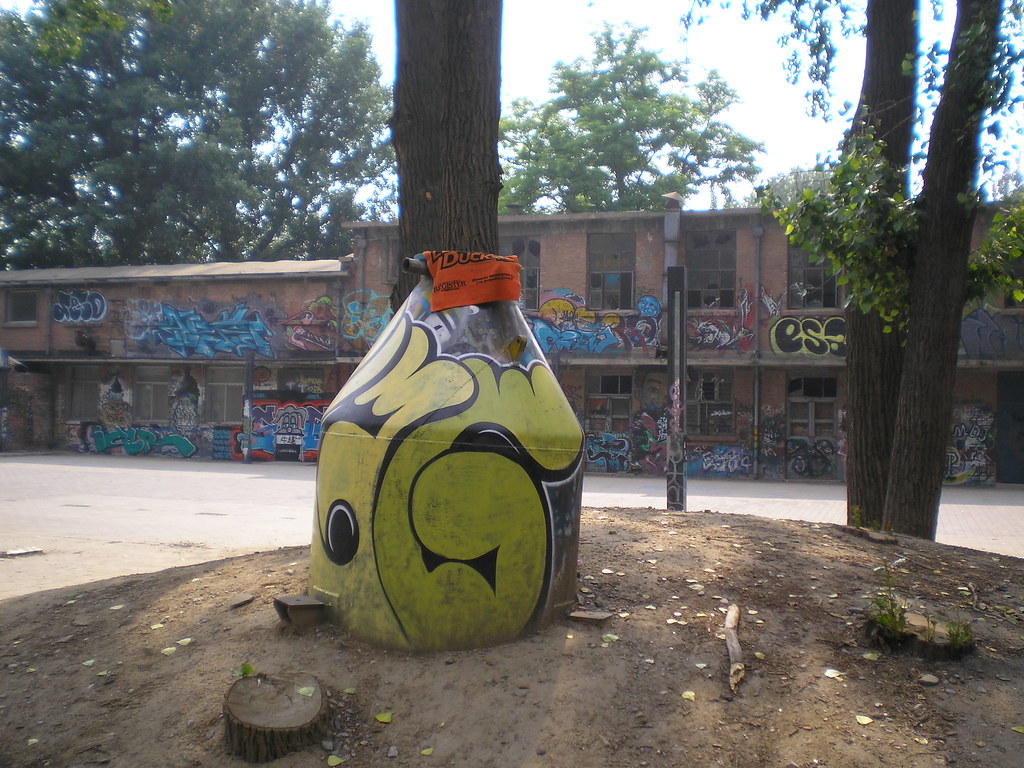


Submitted by: Larry J. (from Los Angeles, CA, USA)
Country: China

Province: Municipality of Beijing
District: Chaoyang District
Location: 798 Art Zone [map]
Status since photo:

The 798 Art Zone is also known as the Dashanzi Art District and is considered the arts area of Beijing. It was formerly a factory district originally formed by the Soviet Union and the People's Republic of China, and later developed with East Germany. It was vital the country until the 1980s when Deng Xiaoping introduced economic reforms, which led to the factory district's decline. Beijing's artist population used this opportunity to settle in the area throughout the mid-1980s, 1990s and 2000s. Today, in addition to artists, it is home to many exhibitions and corporate events and has been designated and preserved as a special art zone.




































































